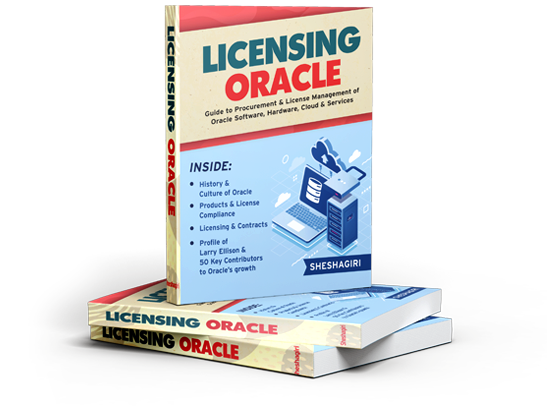Java remains one of the most popular programming languages in the world, powering millions of enterprise applications, mobile apps, and embedded systems. Whether you are a developer, a startup founder, or an IT manager, knowing the difference between Java Free options and commercial licensing requirements is essential. Many organizations still believe Java is entirely free to use, but changes in licensing policies over the years have created confusion. Understanding Java Licensing can help you make informed choices, avoid compliance risks, and control costs.

Why Java Has a Unique Licensing Story
Java was originally created by Sun Microsystems in the mid-1990s and quickly became a standard in enterprise software development. For years, it was freely available for development and deployment without much restriction. However, when Oracle acquired Sun Microsystems in 2010, the licensing landscape began to change. Oracle introduced new terms, particularly affecting long-term support (LTS) versions and updates for production environments.
Today, while Java itself is open source through the OpenJDK project, certain Oracle JDK distributions require a paid subscription for commercial use. This is where the Java Licensing conversation becomes important. Businesses must determine whether their current Java usage falls under a free, open-source model or a commercial license model.
What ÒJava FreeÓ Really Means
When people hear ÒJava Free,Ó they usually think it means there are no costs at all for using Java. In many cases, that is trueÑif you use the right distribution. OpenJDK, the open-source version of Java, is available under the GNU General Public License (GPL) with a Classpath Exception, which allows free use in both development and production. Several vendors, such as Eclipse Adoptium, Amazon Corretto, and Azul Zulu, offer Java Free builds based on OpenJDK, with no licensing fees.
However, ÒfreeÓ in software often comes with trade-offs. Some free Java distributions do not provide long-term support for older versions, meaning you must upgrade frequently to stay secure. In production environments where stability is crucial, this may be inconvenient. ThatÕs why some businesses choose to pay for a commercial license even if a free alternative exists.
Key Points About Java Licensing
Java Licensing determines how you can legally use Java and whether you need to pay for it. Here are some important factors to consider:
Oracle JDK Licensing Ð Oracle JDK is now available under the Oracle No-Fee Terms and Conditions (NFTC) for certain versions, but this license often applies only for specific usage scenarios and periods. For long-term updates, you may still need a paid subscription.
OpenJDK Licensing Ð OpenJDK is licensed under the GPL v2 with Classpath Exception. This allows Java Free usage in commercial and non-commercial applications without royalties, but you may have to handle upgrades more frequently.
Vendor-Specific Terms Ð Some vendors provide OpenJDK builds with their own support terms, which might include optional paid support or additional tools.
Deployment vs. Development Ð Some licenses allow free use for development and testing but require a commercial license for production deployment.
Audit and Compliance Risks Ð Large organizations should track Java installations carefully to avoid unexpected compliance costs during a vendor audit.
Benefits of Using Java Free Distributions
Choosing a Java Free distribution can bring several benefits:
Cost Savings Ð Avoiding recurring licensing fees can significantly reduce expenses, especially in large-scale deployments.
Open Source Flexibility Ð You can customize builds and integrate them without restrictions.
No Vendor Lock-In Ð YouÕre not tied to a single companyÕs update and pricing policy.
Community Support Ð Many free Java distributions have active open-source communities that provide quick solutions and updates.
Popular Java Free distributions include:
Eclipse Temurin (formerly AdoptOpenJDK)
Amazon Corretto
Azul Zulu
BellSoft Liberica
Each of these provides free updates for a certain time period and is suitable for both development and production use.
When Paying for Java Licensing Makes Sense
While free options are appealing, there are situations where a commercial Java Licensing agreement is worth the cost:
Mission-Critical Systems Ð If you run enterprise software that cannot afford downtime, paid support with guaranteed SLAs can be crucial.
Long-Term Stability Ð Some businesses need to stick with a specific Java version for many years. Commercial licensing often includes extended security updates.
Security Compliance Ð Organizations in regulated industries may need certified builds with strict compliance standards.
Enterprise Tooling Ð Oracle JDK and some commercial vendors offer performance monitoring, diagnostics, and management tools not available in free builds.
How to Decide Between Java Free and Licensed Options
The best approach is to evaluate your needs using these steps:
Audit Your Current Java Usage Ð Identify all applications and systems that rely on Java, including embedded systems.
Check Version Requirements Ð See if your systems can run on the latest OpenJDK LTS version or if they require older, long-term supported releases.
Assess Risk Tolerance Ð If you can manage frequent upgrades and rely on community support, Java Free options may work well.
Consider Support Needs Ð If your business requires 24/7 vendor support, a commercial Java Licensing plan may be worth the investment.
Plan for the Future Ð Factor in scalability, security needs, and total cost of ownership.

Final Thoughts
Java is not going away anytime soonÑit remains a core technology in the enterprise world. But the days of assuming it is always ÒfreeÓ without limitations are over. Understanding the nuances of Java Licensing is essential for avoiding compliance pitfalls and unexpected costs.
If you value cost efficiency, open-source flexibility, and can handle regular updates, Java Free distributions like Eclipse Temurin, Amazon Corretto, or Azul Zulu can serve your needs well. On the other hand, if you run mission-critical applications that require guaranteed updates and support, investing in a commercial Java Licensing plan could be the smarter long-term move.
In the end, the choice between free and licensed Java is about balancing cost, risk, and support. By staying informed and proactive, you can make a decision that aligns with your technical needs and business goalsÑensuring Java continues to power your applications without unnecessary headaches.